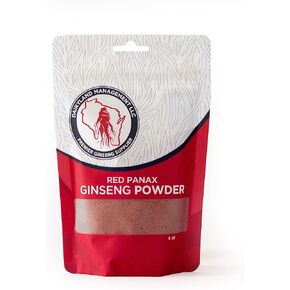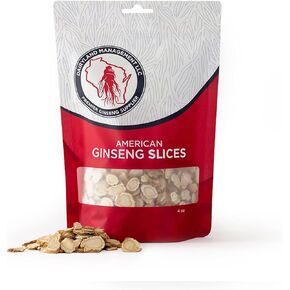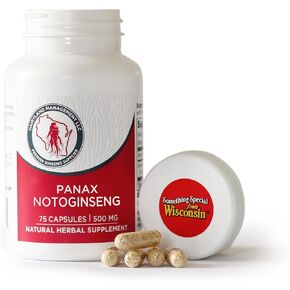- Shopping, made easy.
- /
- Get the app!
For millennia, Eleutherococcus senticosus has been incorporated into Traditional Chinese Medicine as well as Korean and Russian folk herbalism. Famous for its healthful and adaptogenic properties, eleuthero has become well known globally. Also called Siberian ginseng, it is a member of the Araliaceae family and grows in mountain thickets throughout Japan, China, Korea, and Russia. Eleuthero root is often made into a tea or extract. Eleuthero is best known as being an adaptogen and has been part of the herbal repertoire in Chinese medicine for thousands of years. It was also used in Korean and Russian folk medicine, not only for increasing stamina but for promoting overall health. Russian researchers brought attention to this impressive root in the 1960's at which point its fame spread to the West. It can now be found lining the shelves in most health food stores in North America. The Eleutherococcus genus contains over 30 species, some of which are grown ornamentally in the West. E. senticosus is a shrub growing from three to fifteen feet in height, with palmate leaves, and stems that are covered with bristles. It is an understory shrub occurring in mountain thickets and sparse forests up to around 2,500 feet in elevation, and is native to Japan, China, Korea, and the Far East of Russia. Eleuthero is a member of the ginseng or Araliaceae family alongside the famous American ginseng (Panax quinquefolius) and other relatives such as (Aralia spinosa) or Devil's walkingstick. The Chinese refer to eleuthero by its older name, Acanthopanax senticosus, which is how it is listed in many Chinese herbal formulas. The root is best harvested when the plant is dormant. Lateral rootlets should be cut off and the root thoroughly cleaned. Further, in China, the best part of the plant is considered to be the root cortex, thus the root bark can be discarded, if one wants to make a more potent preparation. The eleuthero available commercially is mostly harvested from its natural h

 Red Panax Ginseng Powder with Natural Ginsenosides (16 oz)- Supports Healthy Energy, Vitality, Mood and More, Korean Panax Ginseng Root Powder for Smoothies, Coffee or Drinks (2 Packs)
KWD 10.500
Red Panax Ginseng Powder with Natural Ginsenosides (16 oz)- Supports Healthy Energy, Vitality, Mood and More, Korean Panax Ginseng Root Powder for Smoothies, Coffee or Drinks (2 Packs)
KWD 10.500
 Dairyland American Ginseng Slices - 16 oz Pack Wisconsin Ginseng Slices - Authentic American Ginseng - Non-GMO, Gluten Free Ginseng Root Slices - Use This Herbal Supplement in Soup, Tea, Congee
KWD 15.500
Dairyland American Ginseng Slices - 16 oz Pack Wisconsin Ginseng Slices - Authentic American Ginseng - Non-GMO, Gluten Free Ginseng Root Slices - Use This Herbal Supplement in Soup, Tea, Congee
KWD 15.500
 Dairyland American Ginseng Roots 西洋参 - 16 oz Pack of Wisconsin Ginseng Root - Authentic American Ginseng - Non-GMO, Gluten Free Whole Ginseng - Use This Herbal Supplement in Soup, Tea, Congee
KWD 12.500
Dairyland American Ginseng Roots 西洋参 - 16 oz Pack of Wisconsin Ginseng Root - Authentic American Ginseng - Non-GMO, Gluten Free Whole Ginseng - Use This Herbal Supplement in Soup, Tea, Congee
KWD 12.500
 Dairyland Management LLC Notoginseng Capsules - 75 ct - Tienchi Ginseng Complex Capsules - Authentic Notoginseng Ginseng - Vegan Ginseng Capsules for Use as a Daily Immune Support Supplement
KWD 7.500
Dairyland Management LLC Notoginseng Capsules - 75 ct - Tienchi Ginseng Complex Capsules - Authentic Notoginseng Ginseng - Vegan Ginseng Capsules for Use as a Daily Immune Support Supplement
KWD 7.500